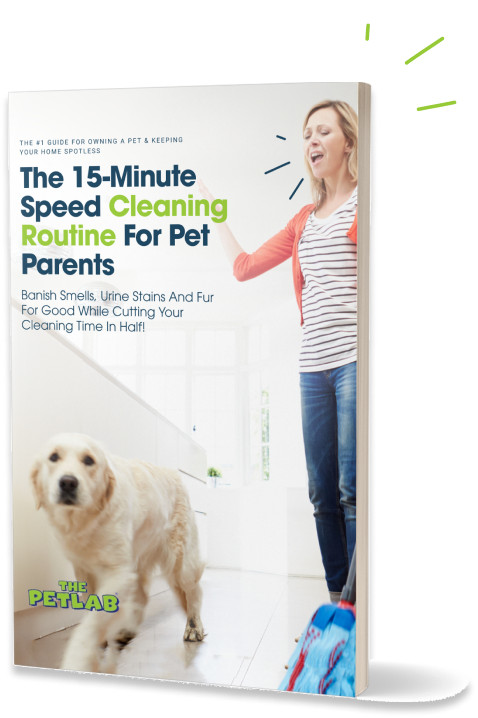You know it’s spring when wildflowers bloom, Jacarandas paint our streets purple, and the sweet chorus of birdsong fills our mornings.
What breaks that tranquillity?
The sound of sneezing! 🤧 Because, like us, dogs are prone to seasonal allergies.
Here is your springtime survival guide.
Allergen awareness
Spring dog allergies are super common in Australia. Thanks to the following environmental factors and our warm, dry climate. (The only downside to 3,000+ hours of year-round sunshine! 😉)
Pollen
Tree pollination starts early in spring, while grass pollination follows later. Generally, tree, grass, and weed pollens are more potent than those from flowers.
And since our four-legged friends get up close and personal with everything, they naturally inhale pollen and get it all over their skin!
Tip: Pollen count peaks at midday. That's when pollen allergies are at their worst!
Mould & mildew
These troublemakers are harmful to humans and just as bad for pets. Exposure can bring about a bunch of health problems.
Top ones to watch out for are canine atopic dermatitis and respiratory distress from inhaling spores and mycotoxins.
Tip: Mould and mildew grow faster in spring and summer. And they are more active at night!
Dust mites
Dust mite allergies occur year-round but kick into high gear in spring. That's because these tiny critters thrive in warm and humid conditions. Unfortunately, dogs are allergic to the mite and its poop.
Tip: Dust mites absorb moisture from the air, which is why they're more common in coastal areas.
The itch factor
Some dogs develop hay fever, but how do such allergies manifest in canines? Do they get a runny nose, watery eyes, and a dry, nagging cough the way we do?
Here's what to expect.
Itchy skin
Your furry friend may lick/chew his groin, underarms, paws, and toes. Scratch or rub his stomach (and sides) on the carpet and along walls or the sofa.
Your dog could drag his itchy bum along the ground (although that's not the only reason dogs scoot). He may paw at his eyes, ears, and mouth.
Finally, Fido may frequently shake his head.
Ear infection (otitis)
Irritated ears become hot and produce more oils, creating the perfect environment for bacteria and yeast. Then boom, infection! In fact, underlying allergies cause up to 75% of otitis cases.
Hair loss
Shedding, thinning of fur, and bald patches anywhere on the body can signal seasonal dog allergies.
Coughing & sneezing
These are telltale signs of springtime allergies. However, canines sneeze for other purposes (e.g. communication), and coughing can be due to other illnesses.
Key takeaway: Springtime allergies may seem harmless, but ignoring them can lead to secondary infection.
Surviving spring with an allergic dog
Good luck dodging pollen when it's carried by the wind, insects, animals, and people.
Mould spores and mycotoxins aren't just invisible to the naked eye—they travel far and wide with the gentlest breeze!
Dust mites live in mattresses, upholstered furniture, carpets, and curtains. With dead skin cells to feed on, they ain't going nowhere.
All this to say, while it's virtually impossible to escape springtime allergens, that doesn't mean you can't do anything to alleviate your doggo's symptoms!
Meds and topical treatments aside, avoiding triggers and keeping a clean home are some of the best—and most affordable—ways to keep your pup's discomfort at bay.
Limit exposure
✔️ Stick to washable toys.
✔️A dehumidifier plus air purifier combo can restrict the growth of mould and mildew and remove spores from the air.
✔️ Keep doors/windows closed when pollen concentration is at its highest.
✔️ Clean your dog's paws after walkies and give its coat a good wipe down with a damp towel. You can use our gentle shammy towel for both tasks! (Better yet: Avoid outdoor activities during peak pollen hours.)
✔️ Bathe your doggy regularly (but not too much to cause dry skin).
Housekeeping
✔️ Healthy Habitat prevents the growth of mould and fungi in the home. E.N. Zyme Stain & Odour Remover tackles protein-based messes, which include all human and pet related stains & odours! Add these to your daily cleaning routine.
✔️ Dog hairs pick up dander, dust mites, mould, and pollen. Use PetLab's rubber broom to rid your home of this allergen magnet.
✔️ Invest in a high-quality HEPA filter vacuum cleaner for soft surfaces. Deep clean carpets every 3 to 6 months.
✔️ Wash bedsheets and pet bedding every week.
✔️ Place Grubby Paw Doormats at all entry points. They absorb water and capture microscopic debris at your doorstep.


